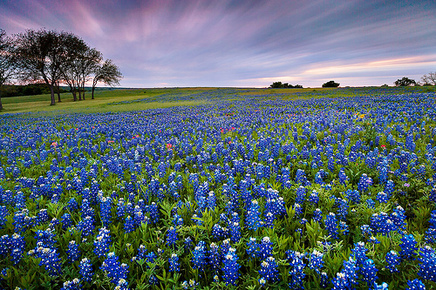
tel: 512 280-1192 Friday, Nov 15 2013
Coming this Sunday: How to Re-wild a 20-acre Hill Country
Garden. 2 p.m. Learn from retired physicist Walter Stewart,
who has toiled for years to return his Bee Caves-area garden to the
splendor of its natural state, and has become one of the saviors of
the bracted twistflower. Read all about Walter and his wife Mary
in this Statesman profile: http://alturl.com/huokc Walter is an
engaging and entertaining public speaker, and a font of horticultural
knowledge. Not to be missed! Nov. 17, free.
______________________________________________________
Nursery notes: 25% off ornamental grasses. 20% off pottery
(except for Talavera). 25% off metal art. Onion sets have arrived!
1015, white Bermuda, red onions - $4 each. Living Christmas
trees in stock: $24.99 - $120 - Leyland cypress, stone pine, and
Aleppo pine. Seasonal rosemary trees - $14.99 - $54. Corn gluten
sale price $40.99. Current opening hours: 9 a.m. - 5:30 p.m.
____________________________________________________
Central Texas Gardener KLRU TV. William Glenn from Garden-
Ville explores re-purposed finds that are inexpensive and fun. Sat.
noon, 4 p.m. or Sun., 9 a.m. www.klru
_____________________________________________________
Tuscan Kale with White Beans and Roasted Garlic, a super-easy
recipe using super-food kale as its main ingredient. From the pages
of Sharon Hanna's The Book of Kale (Harbour Publishing)

Wildflower/ bluebonnet seed mix available at the nursery for $1 a scoop.
Wildflowers for All!
by Amanda Moon
There is an oft repeated feeling that I experience every year here in
Texas. By summer I am mentally packing my bags and moving to
Colorado. I swear that I cannot take one more year here in this heat.
But then something happens. Not just any something… but Texas
in spring happens.
Specifically, our state breaks out into bloom. Then all of a sudden
I no longer feel the immediate need to relocate to somewhere cooler,
because there is nothing “cooler” than spring Texas wildflowers in
all their glory!
If you have an area in your yard that gets plenty of sun and maybe
is in need of a little pizzazz, then you can easily bring these spring
(and summer) blooming beauties to your home garden.
In smaller beds, many wildflowers can be planted from pots as re-
seeding bedding plants or perennials along side your begonias and
daffodils. For larger blank canvasses, there are great seed sources to
fulfill every wildflower lover’s wildest dream.
Bluebonnets and Indian paintbrushes are probably the first wild-
flowers that come to mind when we think Texas but some other great
wildflower choices for home gardens include pink evening primrose,
4-nerve daisy, black foot daisy, penstemon, lantana, mealy blue sage,
coreopsis, gallardia, and purple coneflower.
Some of these plants are becoming so common in the xeric gardens
that we forget that they are actually wildflowers, still found along
many of our roadsides all over the state.
For larger areas, the sky’s the limit when planting a wildflower patch.
Just make sure that the seed mixes that you choose are formulated
for your particular soil type. Sticking with Texas sources will help
ensure your success in choosing the right seeds for your area (and yes,
that even means whether you are east or west of I-35).
Wildflower plants can be installed almost any time from fall until
spring, but the best time to set out seed is in the fall. Many wildflowers
germinate then, including bluebonnets, and so planting now or October,
or even earlier in September will help to ensure mature enough plants
by early spring.
Some also need a cold spell to germinate, and all will benefit from
the cooler fall temperatures and usual rainfall. The more wet stuff
we receive in the fall and winter, the more amazing the blooms in
the spring.
______________________________________________________
How to Plant Wildflower Seeds
To set out seed, take a hard rake – or something similar – and scratch
up the soil to give the seeds a loose surface to work into. Broadcast
the seed over the area according to the seeding rates from the company
for best results (or just scatter them until you are out- which is how it
usually works at my house).
Lightly drag the rake across again to make sure the seeds are in contact
with the soil and then water a few times a week for a couple of weeks
to encourage germination. Another option is to plant just after a good
rainstorm, and let nature take its course.
One note of caution: avoid planting wildflower seeds out where any
weed and feed or pre-emergent has been put down for some time.
This will prevent your seeds from sprouting.
If you’ve been given some wildflower seed balls (golf-ball size balls
of dirt and seeds), they can be scattered out before a good rain into
any promising area and should be able to take care of themselves
from there.
Native wildflowers do not require regular irrigation, but in very dry
years, some supplemental irrigation will help keep your wildflowers
healthy enough to regenerate next season.
To keep your wildflowers coming back every year, especially the re-
seeding annuals, avoid mowing or cutting them down in the spring
until they have finished blooming and have shed their seeds.
Happy gardening everyone!
 Visit the website: www.itsaboutthyme.com
Visit the website: www.itsaboutthyme.com Visit the nursery:11726 Manchaca Road, Austin, 78748 Like us
on facebook